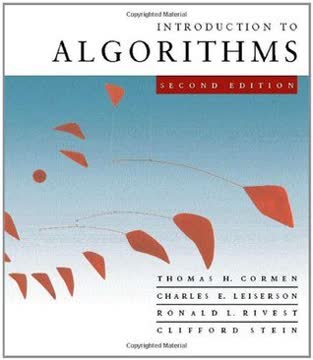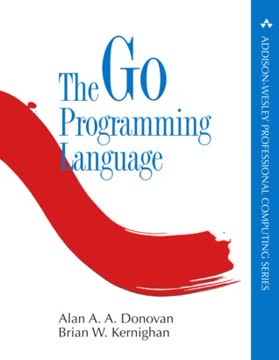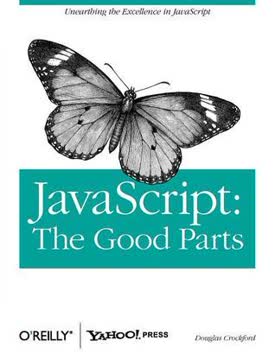Key Takeaways
1. Rust's Ownership System: Memory Safety Without Garbage Collection
Rust's radical wager is that even with these restrictions in place, you'll find the language more than flexible enough for almost every task, and that the benefits—the elimination of broad classes of memory management and concurrency bugs—will justify the adaptations you'll need to make to your style.
Ownership and borrowing. Rust's ownership system is a novel approach to memory management that ensures memory safety without the need for garbage collection. Every value in Rust has a single owner, and ownership can be transferred (moved) between variables. When a value goes out of scope, Rust automatically frees its memory.
References and lifetimes. Rust allows borrowing references to values, which can be either shared (&T) or mutable (&mut T). The borrow checker enforces strict rules to prevent data races and use-after-free errors:
- Only one mutable reference OR any number of shared references to a value at a time
- References must not outlive their referents
These rules are enforced at compile-time, eliminating entire classes of bugs without runtime overhead.
2. Structs and Enums: Building Blocks for Custom Types
Just as everywhere else in the language, if a closure would move a value of a copyable type, like i32, it copies the value instead.
Structs for data grouping. Structs in Rust allow you to create custom types by grouping related data together. They come in three flavors:
- Named-field structs: Most common, with named fields
- Tuple structs: Unnamed fields, useful for simple wrappers
- Unit-like structs: No fields, useful for implementing traits
Enums for variants. Enums in Rust are more powerful than in many other languages, allowing you to define a type that can be one of several variants. Each variant can optionally hold data, making enums ideal for representing states or results that can take on multiple forms.
Rust's pattern matching capabilities, particularly with the match expression, make working with enums highly ergonomic and safe.
3. Traits: Defining Shared Behavior
Traits are Rust's take on interfaces or abstract base classes.
Defining shared behavior. Traits in Rust define a set of methods that types can implement, similar to interfaces in other languages. They allow for abstraction over behavior that types can share, enabling polymorphism and code reuse.
Trait objects and generics. Rust offers two main ways to use traits:
- Trait objects: Allow for runtime polymorphism with some performance overhead
- Generic traits: Provide zero-cost abstractions through monomorphization
Traits can also have associated types and default method implementations, making them a powerful tool for designing flexible and reusable code.
4. Error Handling: Results and Panics
Rust doesn't have exceptions. Instead, functions that can fail have a return type that says so.
Results for expected errors. Rust uses the Result<T, E> type to handle expected errors. This enum has two variants:
Ok(T): Holds the successful resultErr(E): Contains the error information
The ? operator provides syntactic sugar for propagating errors, making error handling concise and explicit.
Panics for unexpected errors. For unexpected errors or situations where recovery is impossible, Rust uses panics. Panics unwind the stack, calling destructors and freeing resources. They're used for:
- Programming errors (e.g., out-of-bounds access)
- Situations where continuing is impossible or dangerous
This two-pronged approach encourages handling expected errors gracefully while still providing a mechanism for unrecoverable situations.
5. Modules and Crates: Organizing and Sharing Code
Rust programs are made of crates.
Modules for code organization. Modules in Rust provide a way to organize code within a crate. They can be:
- Defined in a single file
- Spread across multiple files
- Nested within other modules
Modules control the privacy of items, allowing you to define public interfaces while keeping implementation details private.
Crates for code sharing. Crates are the unit of compilation and distribution in Rust:
- Library crates: Provide functionality to be used by other crates
- Binary crates: Produce executables
The Cargo package manager makes it easy to manage dependencies, build projects, and publish crates to crates.io, the Rust community's package registry.
6. Iterators: Powerful Abstractions for Sequences
Rust's iterators were carefully designed to ensure that the compiler can translate them into excellent machine code as well.
Lazy evaluation. Iterators in Rust are lazy, meaning they only perform work when consumed. This allows for efficient chaining of operations without creating intermediate collections.
Powerful methods. The Iterator trait provides a rich set of methods for working with sequences:
- Adapters: Transform iterators (e.g.,
map,filter,zip) - Consumers: Produce final results (e.g.,
collect,fold,sum)
These methods often lead to more readable and efficient code compared to explicit loops.
Zero-cost abstraction. Through compiler optimizations, iterator chains often compile down to code as efficient as hand-written loops, providing high-level abstractions without performance penalties.
7. Closures: Flexible and Efficient Function-Like Types
Rust closures are designed to be fast: faster than function pointers, fast enough that you can use them even in red-hot, performance-sensitive code.
Syntax and capture. Closures in Rust are anonymous functions that can capture values from their environment. They have a concise syntax and can capture by:
- Reference: Borrows values
- Mutable reference: Borrows values mutably
- Value: Takes ownership of values (using the
movekeyword)
Closure traits. Rust defines three traits for closures:
Fn: Can be called multiple times without modifying captured valuesFnMut: Can modify captured valuesFnOnce: Consumes captured values, can only be called once
These traits allow for fine-grained control over closure behavior and enable efficient implementations.
8. Concurrency: Safe and Efficient Parallelism
A concurrent Rust program that avoids unsafe code is free of data races by construction.
Fearless concurrency. Rust's ownership and type systems prevent data races at compile-time, making concurrent programming much safer than in many other languages.
Threading primitives. Rust provides several tools for concurrent programming:
std::thread: For spawning OS-level threadsstd::sync: Synchronization primitives (e.g.,Mutex,Arc)- Channels: For message passing between threads
Async/await. Rust also supports asynchronous programming with its async/await syntax, allowing for efficient handling of many concurrent tasks without the overhead of OS threads.
9. Smart Pointers: Advanced Memory Management
Rc and Arc: Shared Ownership
Beyond raw pointers. Rust provides several smart pointer types that add functionality beyond what raw pointers offer:
Box<T>: For heap allocationRc<T>: Reference-counted shared ownershipArc<T>: Atomic reference-counted shared ownership (thread-safe)RefCell<T>: For interior mutability
Safety and convenience. These smart pointers provide safe abstractions for common patterns in systems programming, such as:
- Dynamic dispatch
- Shared ownership
- Interior mutability
They allow for more complex memory management scenarios while still maintaining Rust's safety guarantees.
Last updated:
Review Summary
Programming Rust receives overwhelmingly positive reviews, praised for its comprehensive coverage of Rust's unique features. Readers appreciate the book's in-depth explanations, particularly regarding memory management, concurrency, and systems programming concepts. Many found it helpful for both learning Rust and as a reference. The book is noted for its clear writing style, useful examples, and comparisons to C/C++. While some sections are complex, most readers found the content engaging and valuable. It's highly recommended for experienced programmers looking to master Rust.
Similar Books
Download PDF
Download EPUB
.epub digital book format is ideal for reading ebooks on phones, tablets, and e-readers.










